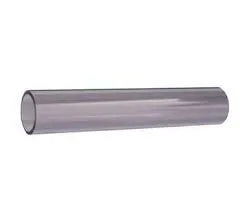កញ្ញា . 02, 2024 13:35 Back to list
drain pipe fittings
Understanding Drain Pipe Fittings An Essential Guide
Drain pipe fittings are crucial components in the plumbing system of any building. They play a vital role in ensuring that waste and wastewater are effectively channeled away from homes and commercial establishments. This article explores the various types of drain pipe fittings, their functions, and their importance in modern plumbing.
Types of Drain Pipe Fittings
To manage the flow of water and waste, different types of drain pipe fittings are used, each serving a specific purpose. The most common types include
1. Elbows These fittings change the direction of the drain pipe, typically at a 90 or 45-degree angle. They are essential for navigating around corners and obstacles in plumbing layouts.
2. Tees Used to create a branch in a pipe system, tees allow for the connection of multiple pipes at a single point. This is especially useful when merging waste lines from various fixtures like sinks and toilets into a single drain line.
3. Wyes Similar to tees, wyes are used to connect pipes at an angle. They provide a smoother flow of wastewater, which helps prevent clogs and backups.
drain pipe fittings

4. Couplings These fittings join two sections of pipe together. Couplings can be used for straight connections or to repair damaged sections of existing pipes.
5. Caps and Plugs Caps are used to seal the end of a pipe, while plugs are designed to block off a drain or outlet temporarily. Both are essential for maintenance and testing purposes.
Importance of Quality Drain Pipe Fittings
Using high-quality drain pipe fittings is crucial for the longevity and efficiency of plumbing systems. Inferior fittings may lead to leaks, clogs, and overall system failure, resulting in expensive repairs and potential property damage. Moreover, the right fittings contribute to efficient drainage, which is vital to maintaining hygiene and preventing health hazards.
In addition to functionality, compatibility is another critical aspect when selecting drain pipe fittings. Choosing fittings that match the diameter and material of existing pipes ensures a proper fit and optimal performance. Common materials include PVC, ABS, and cast iron, each offering unique benefits tailored to various applications.
Conclusion
In summary, understanding drain pipe fittings is essential for anyone involved in plumbing or home improvement projects. By selecting the right components and ensuring they are of high quality, one can maintain an efficient drainage system that serves its purpose effectively. Always consult with a plumbing professional for advice tailored to specific needs, ensuring your sewage disposal systems function without a hitch. Whether you're a homeowner or a professional plumber, knowledge of drain pipe fittings is indispensable in achieving a well-functioning plumbing system.
-
Durable PP Rigid Sheet: Lightweight, Chemical Resistant Solutions
NewsAug.21,2025
-
PVC Grey Sheet for Extraction: Chemical Resistant & Durable
NewsAug.19,2025
-
Durable PVC Pipe Fittings for Plumbing & Irrigation Needs
NewsAug.18,2025
-
HDPE Steel Belt Reinforced Spiral Corrugated Pipe | High Strength
NewsAug.17,2025
-
HDPE Pipe Fittings: Durable, Leak-Proof Solutions
NewsAug.16,2025
-
Premium CPVC Sheet: High-Temp & Chemical Resistant Solutions
NewsAug.15,2025

